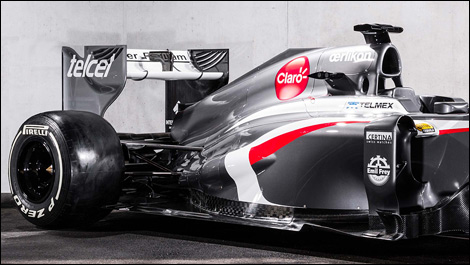The big
winner in this weekend’s second round of the 2013 Formula 1 season wasn’t race
winner Sebastian Vettel or even the resurgent Mercedes, resplendent as they were
in a validating 3rd
and 4th position. Rather, the big winner in Malaysia just might
have been Australia’s Daniel Ricciardo, who finished 18th, retiring his
Toro Rosso after 51 laps.
A rather
lively Malaysian Grand Prix became even more riveting after the final pit stops
as the 1st and 2nd place Red Bulls of Mark Webber and
Sebastian Vettel, along with the 3rd and 4th place
Mercedes of Lewis Hamilton and Nico Rosberg, were ordered by team leadership to conserve both fuel and tires and ensure the cars made it to the finish with
maximum points toward the ever important Constructors’ World Championship. The
dutiful soldiers Webber, Hamilton and Rosberg obeyed. Vettel did not, racing
Webber, taking the position, and driving off to victory.
One need not make a career of observing human behavior to recognize Webber was incensed at
his teammate’s autonomously made decision to rebuke team orders. On the
post-race podium, after ignoring Vettel in the celebratory spraying of the Moet
champagne, Webber even went so far as to suggest Vettel would be “protected as
usual,” a reference to Vettel’s preferred standing in the team.
Red Bull
certainly gives Webber his best chance at Formula 1 victories, but not his only
chance. As he will never usurp wunderkind Vettel as the team’s number one
driver, and as assuredly the team will not voluntarily depart ways with the
defending 3-time World Champion and 27 race winner Vettel, Webber is racing for
racing sake and the opportunity for ever-so-difficult-to-come by F1 race
victories, and with nary a realistic thought of winning a World Championship.
With an
already tense and somewhat fractious relationship between Webber and Vettel, Malaysia may
very well have been the final straw, the one that broke the camel’s back. With
a one year contract, Webber is most likely gone at the conclusion of the
current season, either through his own impetus or with a gentle push from the
team. With a departure by Webber, a seat at Red Bull, the defending 3-time
Constructors’ World Champion becomes available.
All that
supposition brings us to Ricciardo, one of two drivers (along with Jean-Éric
Vergne) of Toro Rosso, Red Bull’s de facto “junior team.” Ricciardo has made no
secret of his ambitions for 2013:
Outrace teammate Vergne and secure a ride with Red Bull for 2014. Malaysia’s
intra-team fireworks gives him the opening to squeeze into.
It’s now up
to Ricciardo, a driver who routinely outpaces his teammate Vergne in
qualifying, to press to the most of his abilities. At stake is a ride in a car
fully capable of race wins and championships. Granted, 2014 brings new
technical specifications for the teams, perhaps leveling the field. But with
the wizardry of Adrian Newey being sketched on the whiteboard, is there a team
better positioned for success than Red Bull?
Three cheers
to this weekend’s podium finishers, Vettel, Webber and Hamilton. But, save the
biggest cheer for perhaps the weekend’s big winner, 18th place
Daniel Ricciardo.
Rub wheels
on Twitter @RayHartjen









